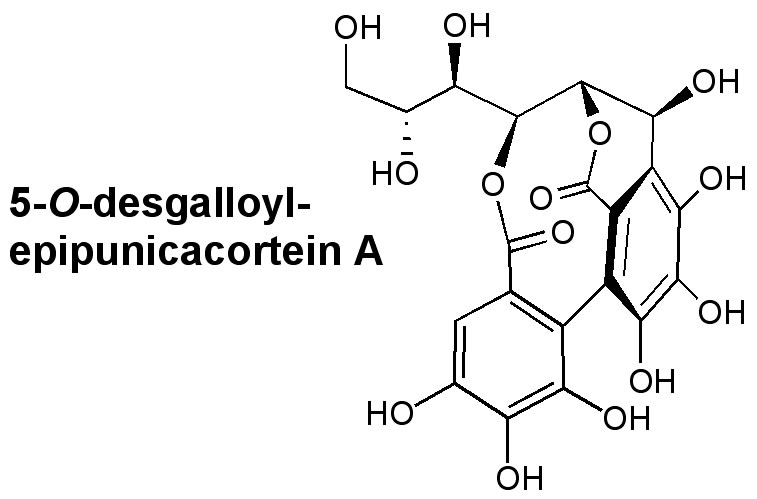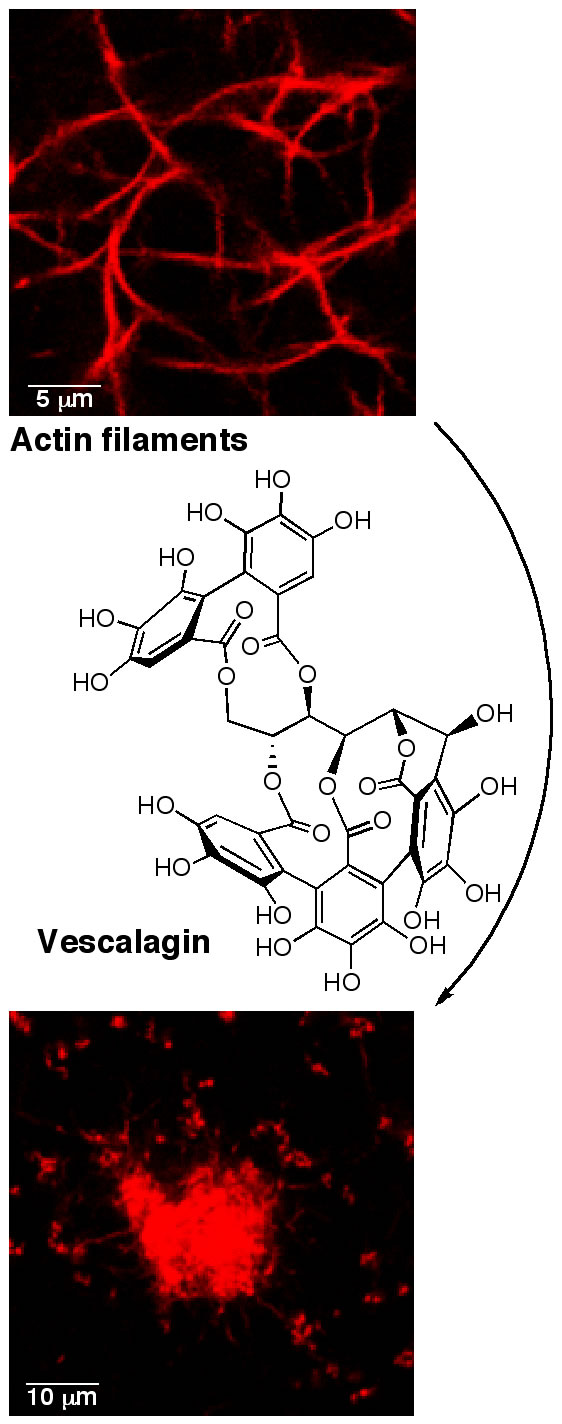
 
 
Pr. Stéphane Quideau
Professeur (CE1), Université Bordeaux 1
Cette adresse email est protégée contre les robots des spammeurs, vous devez activer Javascript pour la voir.
Website
Tel: +33(0)540003010
 
Bio
St√©phane Quideau received his PhD in Natural Products Chemistry at the University of¬†Wisconsin-Madison (USA) in 1994 under the¬†supervision of Prof. J. Ralph. After a postdoctoral stint at The Pennsylvania State University (USA) in Prof. K. S. Feldman‚Äôs group, he¬†moved to Texas Tech University (USA) as an¬†Assistant Professor. In 1999, he moved back¬†to France as an Associate Professor (PR2) at¬†the University of Bordeaux. He joined the IECB¬†as a Group Leader in 2003. He was nominated¬†as a Junior Member of the ‚ÄúInstitut Universitaire de France‚ÄĚ (IUF) in 2004, was promoted¬†Full Professor (PR1) in 2005, and Full Professor (CE1) in 2011. His current fields of interest encompass synthetic and biomechanistic¬†studies of bioactive natural products with a¬†focus on plant polyphenols, the development¬†of synthetic methodologies based on hypervalent iodine chemistry, and the rational design of antigenic peptidomimetics as immuno-therapeutic agents.
 
Keywords / Expertise / Techniques
hypervalent iodine chemistry, phenol oxidation chemistry, plant polyphenols chemistry and biology, synthesis of natural products, peptide and peptidomimetic synthesis, solid phase synthesis, natural products extraction and characterization, electrochemistry, NMR spectroscopy.
 
Summary
Our research activities are mainly concerned with the chemistry and biochemistry of natural products with a focus on phenolic and quinonoid compounds, and with the chemistry and biology of antigenic peptides involved in cellular immune responses. Ongoing projects are dealing with (1) the exploitation of regioselective and asymmetric oxidative dearomatization of phenols for the total synthesis of natural products, in concert with the development of chiral hypervalent iodine reagents, (2) the extraction, structural characterization and synthesis of plant (poly)phenols, in particular C-glucosidic ellagitannins, (3) the development of chemical proteomic tools for the study of protein-polyphenol interactions, and (4) the rational design of antigenic peptidomimetics for the development of synthetic anticancer vaccines.
 
Activity report
Hypervalent Iodine-Mediated Phenol Dearomatization
Our approach to the dearomatization of phenols relies on the use of hypervalent iodine(III) and (V) reagents and is essentially aimed at producing selectively cyclohexa-2,4-dienone derivatives of the orthoquinol and orthoquinone monoketal types for the synthesis of various natural products. The most challenging aspect of the dearomatization of phenols remains its adaptation to the access of orthoquinols or orthoquinone monoketals in a non racemic format. We spent much effort in developing a substrate-controlled solution for this challenge. Some of our results on this topic were published in 2010 in a special issue of Tetrahedron (Symposium-in-Print) that was edited in tandem with Thomas Wirth from the University of Cardiff at the occasion of the 3rd International Conference of Hypervalent Iodine Chemistry, which we organized at IECB in July 2010. In this same article, we also described the use of SIBX, the stabilized IBX reagent developed in partnership with the company Simafex, for the chemoselective conversion of the natural product bergenin into its congener norbergenin and for the rapid synthesis of hydroxytyrosol, a highly potent antioxidant found in olives. We also published in 2010 a review article in Tetrahedron (Report) on hypervalent iodine-mediated phenol dearomatization in natural products synthesis. More recently, we also worked on a reagent-controlled solution to asym
metric dearomatization of phenols by relying on the use of a chiral hypervalent iodine reagent. Our first results and their unexpected mechanistic implications, which call for a possible competition between two ligand coupling-based iodine(III) and iodine(V) pathways, were published in Angewandte Chemie in 2009. Our proposal for the continuation of this work was accepted in Summer 2010 by the ANR for funding (project Iodinnov).
Synthesis, chemical reactivity and biological activity of polyphenolic C-glucosidic ellagitannins
Mainly funded by the Conseil Interprofessionel du Vin de Bordeaux (CIVB), the Conseil Regional d’Aquitaine and the ANR (project EllagInnov), our investigations on this topic have continued to provide us with valuable results. On the synthesis side, we recently achieved the first and biomimetic total synthesis of a first member of the C-glucosidic class of ellagitannins, 5-O-desgalloylepipunicacortein A. This work has been published in 2011 in Chem-Comm. We also published a review article on the chemical synthesis of ellagitannins in Natural Products Report in 2011. This article was selected for the cover.

 We have also developed, in collaboration with Carmelo Di Primo at IECB, a new SPR-based methodology to study the interaction between C-glucosidic ellagitannn ins and various proteins. This work was published in Chem-BioChem in 2009. We now have extended this methodology to the study of the interactions between other types of polyphenolic molecules and various proteins. Notably, we were able to determine that the remarkable antiactin effect of the ellagitannin vescalagin, which we recently unveiled in collaboration with Elisabeth Génot’s INSERM team at IECB, was due to a selective interaction of the ellagitannin molecule with the filamentous form of actin (F-actin) and not with its monomeric globular form (G-actin). These results were published in Angewandte Chemie in 2011. This SPR tool should find numerous other applications in the field as it constitutes to date the best alternative to discriminate in real time specific from non-specific protein-polyphenol interactions. In collaboration with the group of Dr Angel Galabov at the Bulgarian Academy of Sciences, we also published in 2011 an article in Antiviral Research on the combination effect of some ellagitannins and acyclovir against Herpes Simplex Viruses. And for those of you who want to know all about plant polyphenols, we have also published a review article on the topic in Angewandte Chemie in 2011 (Angewandte Chemie Top 25 most accessed articles in 2011). We have also developed, in collaboration with Carmelo Di Primo at IECB, a new SPR-based methodology to study the interaction between C-glucosidic ellagitannn ins and various proteins. This work was published in Chem-BioChem in 2009. We now have extended this methodology to the study of the interactions between other types of polyphenolic molecules and various proteins. Notably, we were able to determine that the remarkable antiactin effect of the ellagitannin vescalagin, which we recently unveiled in collaboration with Elisabeth Génot’s INSERM team at IECB, was due to a selective interaction of the ellagitannin molecule with the filamentous form of actin (F-actin) and not with its monomeric globular form (G-actin). These results were published in Angewandte Chemie in 2011. This SPR tool should find numerous other applications in the field as it constitutes to date the best alternative to discriminate in real time specific from non-specific protein-polyphenol interactions. In collaboration with the group of Dr Angel Galabov at the Bulgarian Academy of Sciences, we also published in 2011 an article in Antiviral Research on the combination effect of some ellagitannins and acyclovir against Herpes Simplex Viruses. And for those of you who want to know all about plant polyphenols, we have also published a review article on the topic in Angewandte Chemie in 2011 (Angewandte Chemie Top 25 most accessed articles in 2011).
 
Biosynthesis of Polyphenolic Anthocyanins and Flavanoids
This project is funded by the Conseil Interprofessionnel du Vin de Bordeaux (CIVB) and concerns the elucidation of the last steps of the biosynthesis of anthocyanin pigments and (oligo)flavanols (i.e., catechins and proanthocyanidins), both systems having common precursors, the leucoanthocyanidins. Several of these precursors, as well as catechin and epicatechin, have been mounted onto solid support in the aim of developing new chemical proteomic tools for the detection/purification of functional proteins in Vitis vinifera and for the study of the chemical transformations brought about by these enzymes. Initial results of the chemistry part of this project were published in Tetrahedron Letters in 2009, and were followed in 2011 by the publication of an article in Chem-BioChem on the development of an affinity-based proteomic strategy for the elucidation of proanthocyanidin biosynthesis.
 
Rational design, synthesis and immunological evaluation of antigenic peptidomimetics
The major histocompatibility complex (MHC) class I-restricted recognition of tumor- and virus-derived antigenic peptides (AP) by CD8+ T-cell receptor (TCR) is a fundamental event in the development of cellular immune responses. Structural studies show that antigenic peptides could be covalently modified with small molecules to modulate the immunological outcome of these protein-peptide-protein interactions. On the basis of the results we published in 2007 in The Journal of Medicinal Chemistry a rational design approach to build bioresistant antigenic peptidomimetics tethered with various organic motifs, new series of peptidomimetics derived from ELAGIGILTV (ELA), a peptide itself derived from the Melan-A/MART-1 protein antigen expressed in 90% of primary and metastasic melanoma, were synthesized. The attachment of central organic motifs in one of these series of peptidomimetics was based on the incorporation of a central ß-lactam motif. An unusual opening of the ß-lactam ring was observed under certain conditions of cleavage from the resin support. One resulting peptidomimetic was found to stimulate Tcells. This work was funded by the company Servier under the auspices of the Société de Chimie Thérapeutique (SCT) and carried out in collaboration with Prof. Aizpurua (Univ. of the Basque Country, San Sebastian, Spain), Prof. Brian Baker (University of Notre Dame, USA) and Prof. Andrew Sewell (University of Cardiff, UK). The results were published in 2010 in Organic and Biomolecular Chemistry. Also, in collaboration with Brian Baker, we published in 2010 in The Journal of Medicinal Chemistry the results of chemical and X-ray structural studies on our first generation of ELA-derived peptidomimetics bound to a class-I MHC molecule. No new result was obtained in 2011.
 
Selected publications
-
Quideau S., Douat-Casassus C., Delannoy López D. M., Di Primo C., Chassaing S., Jacquet R., Saltel F., Genot E. (2011) The C-Glucosidic Ellagitannin Vescalagin Binds Filamentous Actin and Winds it into fibrillar aggregates. Angew. Chem. Int. Ed., 50, 5099-5104. 
-
Pouységu L., Deffieux D., Malik G., Natangelo A., Quideau S. (2011) Synthesis of Ellagitannin Natural Products. Nat. Prod. Rep. 2011, 28, 853-874 (selected for cover, most Accessed NPR article in April 2011).
-
Quideau S. (2011) Triumph for Unnatural Synthesis. Nature. 474, 459-460 (News & Views).
-
Chalumeau C., Deffieux D., Chaignepain S., Quideau S. (2011) Development of an Affinity-Based Proteomic Strategy for the Elucidation of Proanthocyanidin Biosynthesis. Chem-BioChem, 12, 1193-1197.
-
Deffieux D., Natangelo A., Malik G., Pouységu L., Charris J., Quideau, S. (2011). First and Biomimetic Total Synthesis of a Member of the C-Glucosidic Subclass of Ellagitannins, 5-O-esgalloylepipunicacortein A. Chem. Commun., 47, 1628-1630.
-
Quideau S., Deffieux D., Douat-Casassus¬†C., Pouys√©gu L. (2011). Plant Polyphenols ‚ÄstChemical Properties, Biological Activities, and¬†Synthesis. Angew. Chem. Int. Ed., 50, 586-621.¬†
-
Pouys√©gu L., Deffieux D., Quideau S. (2010)¬†Hypervalent Iodine-Mediated Phenol Dearomatization in Natural Products Synthesis.¬†Tetrahedron, 66, 2235-2261 (Tetrahedron¬†Report N¬į 906).
-
Quideau S., Lyvinec G., Marguerit M., Bathany K., Ozanne-Beaudenon A., Buffeteau T., Cavagnat D., Chénedé A., (2009). Asymmetric Hydroxylative Phenol Dearomatization Via In Situ Generation of Iodanes from Chiral Iodoarenes and m-CPBA. Angew. Chem. Int. Ed., 48, 4605-4609.
 
Research team
- Pr. Stéphane QUIDEAU Team leader
- Dr. Denis DEFFIEUX Lecturer (MC/HDR Université Bordeaux 1)
- Dr. Laurent POUYS√ČGU Lecturer (MC/HDR, Universit√© Bordeaux 1)
- Rémi JACQUET Technician (Univ. Bordeaux 1)
- Dr. Céline FRANC Post-doc (LVMH - 5months)
- Dr. Hélène BERTRAND Post-doc (ANR FLUNUCLEOVIR - 4 months)
- Tony GARNIER PhD student (SASN - 4 months)
- Dr. Tahiri SYLLA Post-doc (SASN - 2 months)
- Mélanie DELANNOY PhD student (Foundation Fundayacucho)
- Cyril BOSSET PhD student (BDI CNRS/CRA)
- Romain COFFINIER PhD student (ANR Iodinnov)
- Emilie PETIT PhD student (CIVB)
- H√©l√®ne CARRI√Č PhD student (CIVB)
- Dong Tien TRAN PhD student (Vietnamese Government)
This team is part of the Institut des Sciences Moléculaires (ISM), Université Bordeaux 1/CNRS (UMR-CNRS 5255) and is associated with the Institut des Sciences de la Vigne et du Vin (ISVV).
|